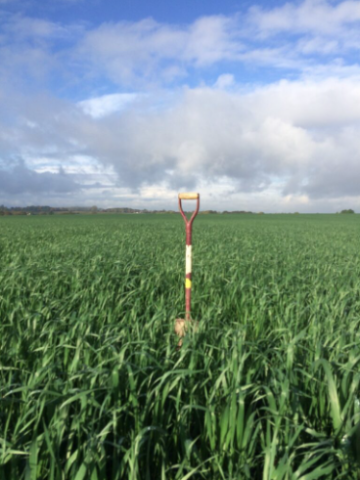Catch crops are grown post-harvest or following silage, these crops hunt nutrients to reduce leaching from the soil while also allowing cover for the soil which prevents erosion. In addition to these benefits, they can also improve soil structure and soil organic matter while offering excellent nutrition for livestock.
There are many different options of catch crop on the market, including cereals, grasses and brassicas to name a few. Often mixes of different species and types are available, which can include a forage crop such as chicory, along with a white clover and a pollinator such as phacelia. Catch crop mixes can be quick growing, allowing livestock to utilise the crop within 6-12 weeks of sowing.
When choosing a crop, first think what the aim of the catch crop is. If it is for livestock grazing look at frost tolerance, nutrition, length of time from sowing to utilisation, crops such as stubble turnips and rape are a great fit for this. If it is to build fertility, or to improve root structure, then a mix consisting of deep rooting species would be beneficial. Next think about the following crop for example if the next planned crop is swedes or oilseed rape, a brassica catch crop would not be desirable, to prevent disease such as club root. If your next crop is peas or beans, then avoid legumes e.g., clover.
Various types of straights are noted below, a mix of these allows for multiple benefits e.g., quicker canopy growth for weed suppression, frost protection from higher leaves, nitrogen fixing, etc.
- Legumes e.g., clover which have nitrogen fixing properties
- Brassicas such as rape or stubble turnips which offer excellent nutrition for livestock
- Pollinating crops such as phacelia
- Cereals and grasses
Establishing a catch crop
Moisture is essential in the successful establishment of a catch crop. Direct drilling offers minimum soil disturbance and for moisture to stay within the soil, as well as maximum soil contact. An early sowing date, where the crop has access to daylight hours is also beneficial, to allow for quick growing, leading to the benefit or producing a large volume of biomass and smothering out weeds.
A catch crop can be established in a standing crop. This would ideally be done 10 days prior to harvest. The catch crop would emerge under the canopy, where it would gather dew and any rainfall, as well as getting protection from weather and pests. At harvest of the main crop, the fodder plant would be at Cotyledon stage, it would be exposed to the light and could get a slight dressing on nitrogen and then grow rapidly.
Kirsten Williams, Senior sheep and beef consultant, SAC Consulting



